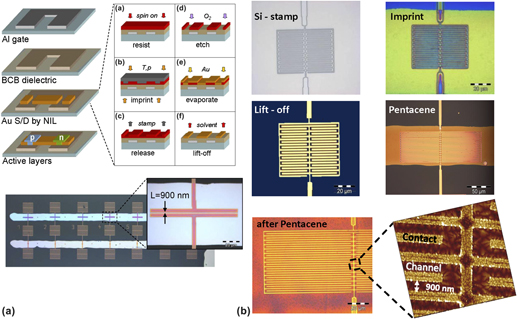Crossref Citations
This article has been cited by the following publications. This list is generated based on data provided by
Crossref.
Nakahara, Rie
Uno, Mayumi
Uemura, Takafumi
Takimiya, Kazuo
and
Takeya, Jun
2012.
Flexible Three‐Dimensional Organic Field‐Effect Transistors Fabricated by an Imprinting Technique.
Advanced Materials,
Vol. 24,
Issue. 38,
p.
5212.
Kudo, Kazuhiro
Yamauchi, Hiroshi
and
Sakai, Masatoshi
2012.
Nanoimprinted Step-Edge Vertical-Channel Organic Transistors.
Japanese Journal of Applied Physics,
Vol. 51,
Issue. 11S,
p.
11PD05.
Nakayama, K.
Ou-Yang, W.
Uno, M.
Osaka, I.
Takimiya, K.
and
Takeya, J.
2013.
Flexible air-stable three-dimensional polymer field-effect transistors with high output current density.
Organic Electronics,
Vol. 14,
Issue. 11,
p.
2908.
Petritz, A.
Wolfberger, A.
Fian, A.
Irimia-Vladu, M.
Haase, A.
Gold, H.
Rothländer, T.
Griesser, T.
and
Stadlober, B.
2013.
Cellulose as biodegradable high-k dielectric layer in organic complementary inverters.
Applied Physics Letters,
Vol. 103,
Issue. 15,
Park, Young Min
Desai, Amit
Salleo, Alberto
and
Jimison, Leslie
2013.
Solution-Processable Zirconium Oxide Gate Dielectrics for Flexible Organic Field Effect Transistors Operated at Low Voltages.
Chemistry of Materials,
Vol. 25,
Issue. 13,
p.
2571.
Mejia, Israel
Perez, Michael R.
Kabir, Dewan L.
Salas-Villasenor, Ana L.
Ramos-Hernandez, Juan C.
and
Quevedo-Lopez, Manuel A.
2014.
Enabling Hybrid Complementary-TFTs With Inkjet Printed TIPS-Pentacene and Chemical Bath Deposited CdS.
IEEE Transactions on Electron Devices,
Vol. 61,
Issue. 2,
p.
576.
Janka, M
Tuukkanen, S
Tuorila, H
Viheriälä, J
Honkanen, M
Stingelin, N
and
Lupo, D
2014.
Use of microcutting for high throughput electrode patterning on a flexible substrate.
Journal of Micromechanics and Microengineering,
Vol. 24,
Issue. 1,
p.
015015.
Mei, P.
Ng, T. N.
Lujan, R. A.
Schwartz, D. E.
Kor, S.
Krusor, B. S.
and
Veres, J.
2014.
Utilizing high resolution and reconfigurable patterns in combination with inkjet printing to produce high performance circuits.
Applied Physics Letters,
Vol. 105,
Issue. 12,
Karmel, Hunter J.
Garramone, John J.
Emery, Jonathan D.
Kewalramani, Sumit
Bedzyk, Michael J.
and
Hersam, Mark C.
2014.
Self-assembled organic monolayers on epitaxial graphene with enhanced structural and thermal stability.
Chem. Commun.,
Vol. 50,
Issue. 64,
p.
8852.
Petritz, Andreas
Wolfberger, Archim
Fian, Alexander
Griesser, Thomas
Irimia‐Vladu, Mihai
and
Stadlober, Barbara
2015.
Cellulose‐Derivative‐Based Gate Dielectric for High‐Performance Organic Complementary Inverters.
Advanced Materials,
Vol. 27,
Issue. 46,
p.
7645.
Taylor, D. Martin
2016.
Progress in organic integrated circuit manufacture.
Japanese Journal of Applied Physics,
Vol. 55,
Issue. 2S,
p.
02BA01.
Zhang, Haibo
Marwat, Mohsin Ali
Xie, Bing
Ashtar, Malik
Liu, Kai
Zhu, Yiwei
Zhang, Ling
Fan, Pengyuan
Samart, Chanatip
and
Ye, Zuo-guang
2020.
Polymer Matrix Nanocomposites with 1D Ceramic Nanofillers for Energy Storage Capacitor Applications.
ACS Applied Materials & Interfaces,
Vol. 12,
Issue. 1,
p.
1.





